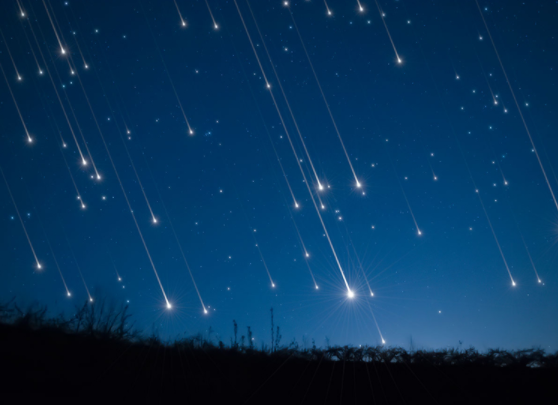Dubai: It’s that time of the year when the Geminids are occurring. But this time round, the Geminid meteor shower will be a veritable celestial treat. With no “moonlight interference”, the night of December 13, when the bright Geminids, which started occurring on December 4, will peak will allow viewers to see more than one meteor fall a minute. So the Dubai Astronomy Group (DAG) is urging the public to get ready for the spectacular show.
The Geminids, which will continue into the morning of December 14, will see the maximum meteors fall per hour (120 per hour).
According to the DAG, the name of the shower comes from the constellation Gemini as the meteors seem to emerge from this constellation in the sky.
“Meteors should be visible across the entire sky, though from Dubai, the radiant of the shower will appear 58° above your north-eastern horizon at midnight. This means you may be able to see around 120 meteors per hour, since the radiant will be high in the sky, maximising the chance of seeing meteors. The shower will be visible across the entire globe except for Antarctica, which gets 24 hours of sunlight per day during this part of the year,” DAG CEO Hasan Al Hariri said.
Also Read: UAE reports 1,260 new COVID-19 cases, 2 deaths
Why do meteors fall?
Unlike most other meteor showers, the Geminids are not associated with a comet but with an asteroid: the 3200 Phaethon. The asteroid takes about 1.4 years to orbit the Sun.
Geminid’s parent – 3200 Phaethon – is a “rock comet” Every year, in December, our planet Earth crosses the orbital path of an object called 3200 Phaethon, a mysterious body that is sometimes referred to as a rock comet. The debris shed by 3200 Phaethon crashes into Earth’s upper atmosphere at some 80,000 miles (130,000 km) per hour, to vaporize as colorful Geminid meteors.
The Geminid meteor shower is nearly 200 years old, according to known records — the first recorded observation was in 1833 from a riverboat on the Mississippi River — and is still going strong. In fact, it’s growing stronger. That’s because Jupiter’s gravity has tugged the stream of particles from the shower’s source ― the asteroid 3200 Phaethon closer to Earth over the centuries.
Where and how to watch?
DAG and the Mleiha Archaelogical Centre, Sharjah, will be organising paids event on the night of December 13 to watch the meteor shower.
DAG’s Geminids Meteor Shower Event will allow people to watch the “Decoding of the Night Sky” by a renowned astronomer and experience the viewing of the meteor shower and other celestial bodies and deep sky objects with a telescope and laser marking of stars. Expect lectures, demonstrations and Q&A sessions as well.
Al Hariri said, “You don’t need any special equipment or a lot of skills to view a meteor shower. Even though all you really need is a clear sky and handy Interactive Meteor Shower Sky Map with a visibility conditions meter to see a meteor shower, some tips can help maximise your shooting star viewing experience.”
Dubai Astronomy Group’s Tips:
Dress for the weather
Make sure you are comfortable, especially if you plan to stay out long
Bring a blanket or a comfortable chair with you
Find a secluded viewing spot, away from the city lights
Your eyes may take 20 minutes to get used to the dark. Lie down on the ground and look up in the direction of the radiant
Also Read: Flight from Dubai to India will be available only 5 days from 11-December, and will be charged extra
Use DAG’s Interactive Meteor Shower Sky Map to find the current direction of the radiant in the sky


